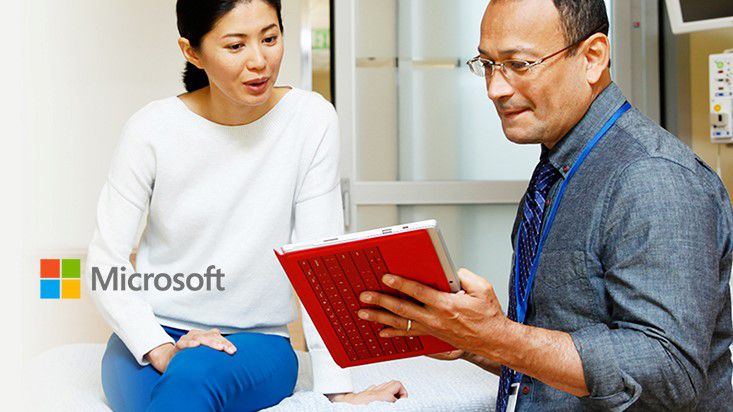How a doctor improved clinical efficiency and patient satisfaction with a Surface Pro 3

Dr. Brian A. Levine is not only an ob/gyn and infertility specialist, but also the technology editor for Contemporary Ob/Gyn magazine. I recently caught up with him to learn how his Microsoft Surface tablet is helping him be more productive and improve patient satisfaction.
What has been your overall experience using the Microsoft Surface tablet in your clinical practice?
One of the first things I noticed was that I could use the Surface Pro 3 as a full computer. When I used tablets from other manufacturers in the past, I had to use watered-down versions of applications or buggy interfaces. With Surface Pro 3, I get the Windows operating system and I can use the full versions of my clinical applications. I use Centricity™ Electronic Medical Record (EMR) from GE Healthcare; ImageJ, an open source image-processing program for scientific multidimensional images; and SPSS for my statistical work such as crunching numbers for population health research. All of those applications work beautifully on my Surface Pro 3.
Plus, I can use voice, stylus, or keyboard to drive the Surface Pro 3! It weighs about the same as other tablets and has eight hours of battery power. It is my one computer that I use for everything, whether I’m meeting with patients at our clinic, on rounds at a hospital, or working in my office.
By integrating Surface Pro 3 into my workflow, I’ve been able to improve my clinical efficiency. I get out the door faster and leave the office more satisfied with the quality of work I did during the day. Most importantly, I’m a much more effective physician because I have the power of a workstation in the palm of my hand, which is pretty incredible.
How has your Surface Pro 3 helped you improve patient interactions?
For 10 years, I stared at a wall-mounted monitor and wasn’t able to look at the patient as I typed or looked something up. Using the Surface Pro 3, I’m able to have much more direct eye contact with my patients. That allows me to get more visual feedback from my patients and is a big improvement to our communication and their experience.
I also use dictation software on the Surface Pro 3 so I can dictate notes into a patient’s chart in front of the patient—and then ask the patient if I missed anything. That makes patients feel more engaged in their healthcare plan and provides the transparency they want.
And because I can use the full version of my EMR on the Surface Pro 3, I can access complete records for all my patients on the fly. If they ask if their lab results are back, rather than making them wait, I can say, “Let’s look right now.” I can also review a surgical plan with the patient in the pre-operation area, which helps with the informed consent process. And I can go over patients’ radiographic studies with them with the great graphics and bright screen of the Surface Pro 3.
Stay tuned for part two in this blog series in the coming weeks. It will cover quantified time savings, improved collaboration, and other benefits Dr. Levine is experiencing with his Surface Pro 3, plus his thoughts on how the landscape of being a doctor is changing. In the meantime, please let us know if you have any questions or feedback via email, Facebook, or Twitter.



![[4:56 PM] Jordan Davis (Wipro Designit Services, Inc.) Green background with colored swoops on the top and an image of a young adult helping older adult with a computer.](https://www.microsoft.com/en-us/industry/blog/wp-content/uploads/2024/04/MSFT_Azure_APR08_328468_Blog_Blogheader_240408_V01-1-300x169.webp)
